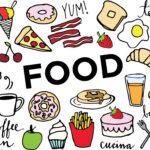 Videos
Videos
- What it actually means to be on the autism spectrum | Love On The Spectrum
- Being on The Spectrum and Relationships | Love On The Spectrum .
- Dating dos and don’ts | Love On The Spectrum
- Love on the Spectrum Jodi and Kelvin
- Love on the Spectrum | Official Trailer | Netflix
- Watch Love on the Spectrum | Netflix Official Site
Articles
- Signs of autism | Ada
- Dating on the Autism Spectrum: Neurotypical Partners Open Doors Therapy
- Romantic relationships and feelings: autistic teenagers
Vocabulary
- Autism – a neurological disorder characterized by difficulty with communication, social interaction, and repetitive behaviors Example: The child was diagnosed with autism at a young age and received specialized education and support.
- Spectrum – a range of different things, often used in reference to the range of symptoms and severity of a particular disorder or condition Example: Autism is a spectrum disorder that can manifest in many different ways.
- Neurotypical – used to describe individuals who do not have neurological differences or disorders Example: The majority of people are considered neurotypical, without significant neurological differences.
- Mocking – making fun of someone or something in a cruel or insulting way Example: She was hurt by her friend’s mocking comments about her appearance.
- Point taken – an acknowledgment that someone’s argument or point has been understood and acknowledged Example: “I see your point, but I still disagree,” he said in response to his colleague’s argument.
- Coincide – to happen at the same time or to occur together Example: The timing of the conference coincided with her vacation plans, so she was able to attend.
- Undermine – to weaken or damage someone or something, often in a sneaky or indirect way Example: The negative comments from her boss were starting to undermine her confidence.
- Deal breaker – a factor or issue that is significant enough to end a relationship or agreement Example: His unwillingness to compromise on a certain issue was a deal breaker in their business negotiations.
- Contrarian – someone who opposes or disagrees with popular opinion or accepted beliefs Example: She always takes a contrarian approach to any discussion, challenging conventional wisdom and pushing for new ideas.
Discussion Questions
- How aware of autism are you?
- Do you know people who are on the autism spectrum?
- Can you think of people in your classes growing up that might have been on the spectrum? How were they treated by teachers and classmates?
- Do you feel like you have any ‘spectrum’ behaviors?
- In what ways are you not ‘neurotypical’? How do you think your mind works differently from most people?
- What social situations confuse you and/or cause you anxiety?
- What are your ‘dos and don’ts’ advice for dating?
- What first date advice do you have (for someone on the spectrum or not)
- On a dating app, what would be (is) your 2-4 sentence bio?
Signs of Autism (Excerpted from: Signs of autism | Ada )
Signs of autism in older children and teens
- Develop a narrow range of interests or obsessions with certain topics
- Engage in repetitive behavior such as hand flapping, twirling or snapping a rubber band
- Not make eye contact
- Have difficulty with social interactions
- Not understand emotions in others or themselves
- Prefer to be on their own
- Avoid physical contact
- Have unusual sleeping patterns
- Use formal language rather than the slang of their peers
- Place great importance on routines and rules
- Develop strong preferences for certain foods, clothes or objects
An adult with mild symptoms, who is towards the higher functioning range of the autism spectrum, may:
- Have difficulties with social interactions
- Avoid making eye contact
- Not understand nonverbal facial or body gestures, such as frowning or shrugging
- Not understand changes in tone of voice, such as sarcasm
- Be comforted by rules and routine
- Get upset at changes to routines
- Be under- or over-sensitive to loud noises, strong smells or tastes
- Engage in repetitive behaviors, such as pacing or hand flapping
- Have a narrow range of interests
- Have a good memory and recall of facts
Many people with autism spectrum disorder engage in repetitive behaviors, known as stereotypy, self-stimulatory behavior or stimming. Examples of these kinds of behavior include:
- Flapping arms
- Rocking from side to side
- Jumping or hopping, including while seated
- Flicking a rubber band or piece of string
- Staring at lights
- Twirling
- Watching a moving object
- Head banging
- Making the same noise repeatedly
- Scratching
Some people with autism develop extreme preferences, dislikes or practices around food, for example:
- Only eating food that falls into the same food groups, such as sweet, salty or bitter
- Selecting or refusing foods based on texture, smell, color or temperature
- Covering all food in sauce
- Putting too much food in the mouth, where a person lacks sensory sensitivity
- Biting inner lips and cheeks when faced with food they don’t like
- Only eating food presented in the same manner each time
Views: 488






Leave a Reply